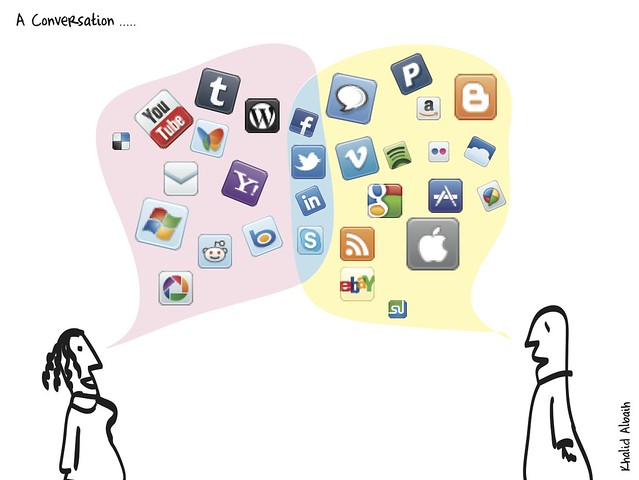
This past week has been a busy one for me, with professional experiences ranging from face-to-face workshops and two webinars, to our first school-based field experiences with pre-service teachers; additionally I met with my writing project leadership team, facilitated two writing groups and ended last night by helping to moderate a panel discussion amongst principals for helping them secure a job. Whew…
In and amongst all of these activities, I have been reminded of the power of teacher networks. In fact, my entire professional life centers on the idea of teacher networks. Identifying networks. Building collaborations. Nurturing novice and veteran teachers alike. Putting them in conversation with one another. Asking smart questions about curriculum, instruction, and assessment. Creating new networks, and beginning the process again. It’s part of who I am, part of what I do.
In that sense, part of what I am attempting to do with my pre-service teachers this semester to do — through the use of Twitter — is to build a teacher network. I am not simply asking them to “use Twitter.” Instead, I am coaching them in the process of using Twitter as a tool for building their PLN. This happens both online and off. As evidence of this, I spent about 20 minutes of class time last week introducing some of the nuances of Tweetdeck as a tool for monitoring and participating in hashtag conversations.
At the core, what I am attempting to do with my pre-service teachers is about using technology in a way that moves well beyond simplistic integration. As Ruben Puentedura describes it in his SAMR model, I want pre-service teachers to move from technology as a tool for enhancement of teaching practice into an opportunity to transform their practice.
Yet, I find my pre-service teachers, even the most engaged Twitter users amongst them, to be hesitant about using social networking in this manner.
Of course, change is hard, and I am working to ease them into it. I want to provide them with the opportunity, yet not foist Twitter upon them. At the same time, we cannot move fast enough. There are so many conversations, so many ideas that they need to jump into, so many networks that they can learn from.
Indeed, my colleagues in teacher education could take a play from the Twitter/PLN playbook, as I do not often see teacher educators participating in regular conversations. There are exceptions, of course, but when I was in a recent college of ed meeting about reforming our teacher ed program, no one presenting mentioned how we could tap into these existing networks as a way to recruit mentor teachers, build school partnerships, and learn about current trends in the field. Many of my colleagues need to rethink how they, too, participate in networks as a broader component of their own (and their pre-service teachers’) professional learning.
At this point, I am still pushing forward with Twitter outside of my methods class, though I think I might use it in class next week to hold a backchannel conversation, too. I’ve resisted the urge to place any kind of grade on Twitter participation, though I have told students that they will be evaluated on their participation in class, both at the mid-term and at the end of class. So, I will keep working to get them involved, and to get other teacher educators involved, too.

This work is licensed under a Creative Commons Attribution-NonCommercial-ShareAlike 4.0 International License.
















 Troy Hicks ? @hickstro
Troy Hicks ? @hickstro
